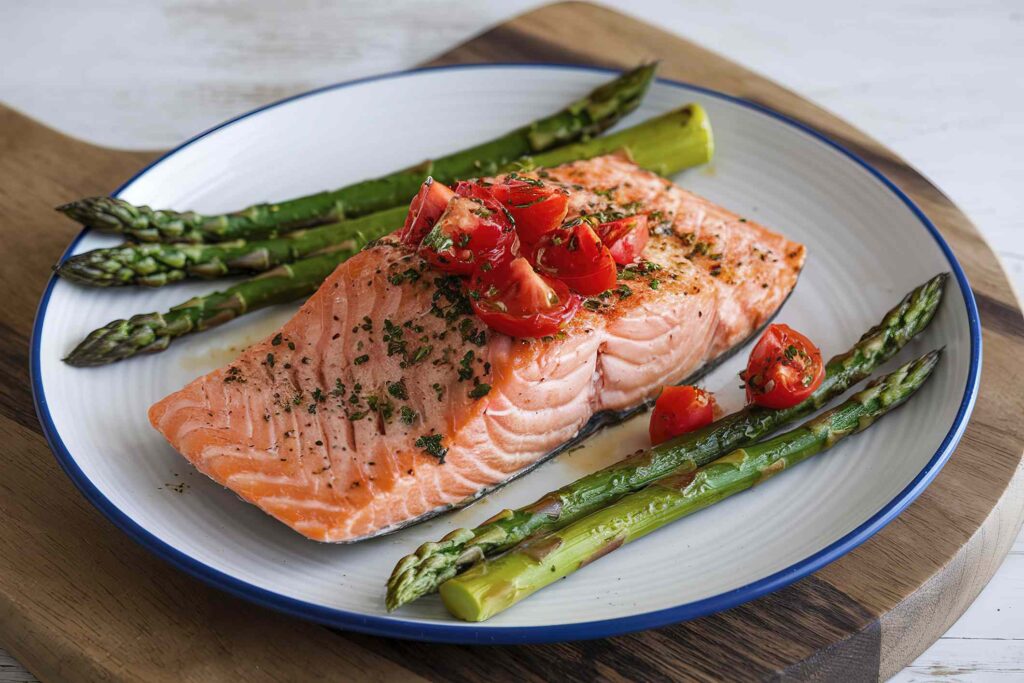Salmon is an excellent source of protein. A standard 3-ounce serving (about the size of a deck of cards) provides around 22 grams. Along with protein, salmon also contains healthy fats, vitamins, and minerals. When eaten as part of a balanced diet, salmon can help support muscle health, promote heart health, and lower inflammation.
Here’s how much protein is in different portion sizes of cooked wild Atlantic salmon:
- 3 ounces (oz): 21.6 grams (g) of protein
- 4 oz: 28.8 g
- 6 oz: 43.2 g
The protein content varies across different types of salmon. Here’s the amount of protein in a 3-ounce cooked serving of different salmon types:
- Sockeye salmon (wild): 22.5 grams of protein
- Chinook salmon: 21.8 g
- Atlantic salmon (wild): 21.6 g
- Pink salmon: 20.9 g
- Wild coho salmon (silver salmon): 19.9 g
- Wild pink salmon (canned): 19.6 g
- Atlantic salmon (farmed): 18.8 g
Protein plays a role in nearly every body function. It helps build and repair muscles, produce hormones, support immunity, and much more.
Salmon is a complete protein. This means it provides all nine essential amino acids your body needs but cannot make on its own.
Incorporating high-quality protein foods such as salmon into your diet helps maintain muscle mass, supports muscle recovery after exercise, and promotes healthy blood sugar levels. Protein can also help keep you full, which may support weight management.
Also, salmon is one of the richest sources of omega-3 fatty acids, which support heart and brain health and help reduce inflammation. It’s also among the best food sources of vitamin D, which plays an important role in bone strength and immune function.
A few things can change how much protein is in salmon:
- Type of salmon: Wild salmon, such as sockeye, is usually leaner and has slightly more protein than farmed Atlantic salmon.
- Cooking method: Although the total amount of protein in salmon remains relatively unchanged with cooking, high-heat methods such as frying or roasting can damage the protein structure and reduce its quality. Gentler methods, such as baking, grilling, or steaming, can preserve protein quality and amino acid availability.
- Portion size: Restaurant portions are often larger than the standard serving size. This means you could get about twice the protein in one meal.


